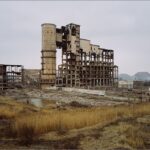In August 2024 a surprise Ukrainian incursion in Kursk Oblast resulted in the capture of 1,376 square kilometres of Russian territory. Over the next six months the enclave was repeatedly attacked. Ukrainian-controlled territory shrunk to an area anchored on the town of Suzhda. In the second week of March the Ukrainian defence collapsed. Units withdrew to the border zone. The Russian command hailed a bold operation involving infiltration via a gas pipeline as catalyst for the Ukrainian retreat – Operacija Potok, or Operation Flow. This article assesses Operation Flow and the wider Ukrainian withdrawal from the Kursk salient.
Preparations for Operation Flow
Operation Flow was three weeks in the making. Command was vested in the Chechen Lieutenant-General Apti Alaudinov. Alaudinov has been a tireless self-promoter during the Kursk campaign. Operation Flow provided him with another opportunity to burnish his credentials with the Kremlin.

First, methane gas residues had to be cleared from a 15 kilometre stretch of the Urengoy-Pomary-Uzhgorod pipeline that runs north-east of Suzdha. This was not entirely successful and a number of soldiers were hospitalised with neurotropic poisoning. Some Russian bloggers reported suffocations. Next, ammunition, food and water had to be ferried down the pipeline on special barrows. Toilets were also sent down.
One Russian channel described the conditions thus: ‘Walk, crawl almost 16 kilometres through a narrow dirty tunnel 1.45 m in diameter with vapours from the remains of liquefied gas; sit in a pipe waiting for the command to storm for several more days. Breathe in methane vapours, excrement, vomit of those who were the first to be poisoned, and there is no longer any possibility of calling for evacuation from this point, when the enemy is closer than our own.’

Volunteers were drawn from multiple units: 11th Airborne Brigade, 106 Airborne Brigade, 72nd Motor Rifle Division, 30th Separate Guards Motor Rifle Brigade, the Veterans Airborne Assault Regiment, the Vostok Airborne Assault Regiment, and Akhmat (Chechen) special forces. A total of 800 troops were involved (General Gerasimov reported a lower number of 600 to President Putin in a later staged meeting).

Due to the conditions, troops had to enter in small groups of five people with a distance of at least ten meters between groups. At halts soldiers moved a couple of meters away from each other so that they could breathe. A distance of 11-12 kilometres was covered over four days. Some spent as long as a week in the pipeline.

As many as four exit points are believed to have been made in the pipeline, but possibly only one used. The Ukrainians actually intercepted communications between Russians complaining about the awful conditions in the pipeline. On Saturday 8 March the order was given to break cover and infiltrate northern Suzdha.
Was the pipeline operation a success?
Ukrainian reporting suggests Operation Flow achieved limited tactical success. The Ukrainian command was aware of the scheme and was keeping the pipeline under surveillance. YouTube video evidence shows a group that emerged in fields was quickly struck by artillery fire and dispersed in a nearby wood line.

Another group reportedly reached a two-storey building in the industrial area of Suzdha but was destroyed. In total, Ukrainian sources report only around 100 soldiers actually emerged from the pipeline. That no Russian video or imagery was presented showing soldiers hoisting unit flags – a common practice to demonstrate success – suggests Ukrainian reporting is credible.
Even so, an 82nd Air Assault Brigade soldier (the formation that engaged the Russians) also reported that although his unit was aware of the plan and repelled Russians that emerged from the pipeline, a number still managed to infiltrate the area of northern Suzdha. He told this was ‘the reason why his brigade was forced to destroy part of its available equipment and withdraw from the eastern flank to the city of Sudzha itself, completely losing contact with part of the troops in the forward positions.’ Some reporting suggests the Russians committed the act of perfidy by wearing blue armbands for the first 24 hours of the operation (identifying as Ukrainians) before switching to red armbands.

The Ukrainian withdrawal – reasons and execution
Ukrainian units were forced to withdraw from the Kursk enclave because they were attempting to hold a narrow salient, squeezed on three sides by much larger forces, and with only one hard-topped resupply route – the R200 border road to Suzhda, The strongest units – the 80th, 82nd and 95th brigades of the Airborne Assault Forces were deployed in the centre of the enclave with weaker units holding the flanks. The Russians attacked the flanks.
By the beginning of March, Russian forces had crossed the Sumy border to the west and rear of Suzdha and established lodgements in the villages of Novenke and Basivka. The distance from the latter to the R200 is just three kilometres. This allowed the Russians to interdict the R200 using unjammable fibre-optic drones. Western OSINT analysts spotted three of the best Russian FPV drone units in the area: ‘Judgement Day’, ‘Sudoplatovtsy’ and ‘Moses’. To the south and also rear of Suzdha, Russian forces made a separate breakthrough in the area of the village of Plekhovo. One sergeant-major remarked ‘I can’t even go out to pee, because there are drones everywhere.’ The R-200 became a ‘highway of death’ and the Ukrainian enclave untenable.


The withdrawal was neither well commanded nor executed. Once again, Ukrainian forces paid a price for lacking a divisional level of command and effective cadre of staff officers. Brigades and units were instructed to fall back on Suzdha but without proper co-ordination. A marine from 36th Marine Brigade reported they never received an order from above and the decision to withdraw was taken by his company commander: ‘We walked for almost two days through fields and forest belts, constantly hiding from drones that swarmed the entire sky, and were afraid that we would not get out of here. Several of my comrades did not survive because they encountered Russian FPVs. We walked mostly at night to have a better chance of survival, but some decided to walk during the day, and it was a fatal decision.’
The cost of holding the enclave for six months was high: around 600 armoured vehicles including 62 tanks, 211 armoured personnel carriers/infantry fighting vehicles and 242 MRAPs. Nearly 100 vehicles were captured. The Russians lost the slightly higher number of about 700 armoured vehicles including 70 tanks and 400 APCs. Typically the loss exchange ratio has been in the order of 1:2.5-3. The poor numbers have been explained by ‘the enemy’s unprecedented use of fibre-optic drones, the round-the-clock bombardment of the front line by KABs [glide bombs], and shelling with large-calibre artillery’. The destruction of four bridges meant some heavy equipment was abandoned, worsening losses.

The timing of the collapse of the Ukrainian salient in Kursk has been fortuitous for the Kremlin, now starting negotiations with American interlocutors. Putin can posture as victor. Ukrainian forces must regroup and prepare for the next Russian push. The war is far from over.
Sergio Miller
Sergio Miller is a retired British Army Intelligence Corps officer. He was a regular contributor and book reviewer forBritish Army Review. He is the author of a two-part history of the Vietnam War (Osprey/Bloomsbury) and is currently drafting a history of the Russian invasion of Ukraine.




